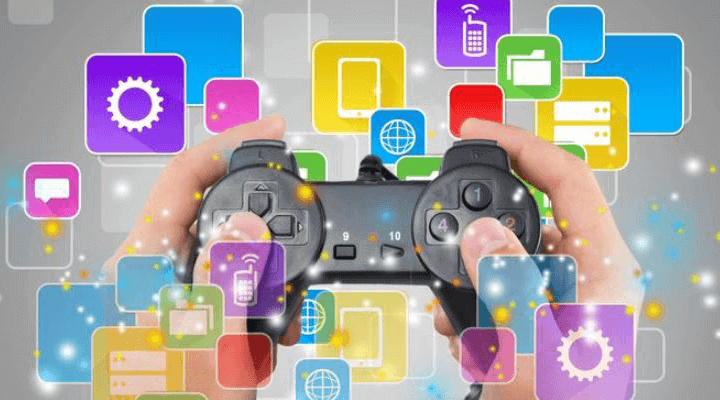Anyone who’s collected a “lucky dozen” stars at Starbucks knows the sublime feeling of inexplicable accomplishment that comes with your next grande-iced-sugar-free-vanilla-latte-with-soy-milk, lovingly prepared by your barista for free.
This is called “gamification.” By applying the principles of games to ordinary actions, our natural instincts for competition and status are engaged, and we try a little harder to come out on top. Such desires can be an enormously effective force. It’s not just ordering coffee or updating your status, however: it’s something that astronauts have been doing since the career field’s founding. The Right Stuff, by Tom Wolfe, tells the story of the Mercury astronauts—the first Americans to go into space. It was dangerous work—strapping yourself into the tip of rockets with notorious histories for blowing up on the launch pad. The astronauts weren’t scientists; they were test pilots. Their capsules required no real piloting skills. A monkey could do it—and monkeys actually did! Test pilots being the ultimate alpha warriors, everything was in some way a competition. Who would be the first in space? The first in orbit? The longest flight?
Eventually, the competition became: who can be the most technically proficient. Which of the astronauts could fly a technically perfect mission, checking every box on NASA’s extensive list of astronautic mission tasks, conserving fuel, and landing on target. (Wally Schirra flew the first perfect mission about the Mercury-Atlas 8—the fifth manned American mission to space.) That was gamification: using competition to instill superior performance by all, and to encourage hard work.
GAMING MORE THAN YOUR PURCHASES
“You think this is some kind of game?” shouted all of our fathers at some point in our youth. The short answer is: yes. A gamified task is some kind of game, and can be fun, lucrative, and beneficial for your career. And whether you’ve noticed it or not, we’ve spent our lives playing subtle games with industry. Collecting 10 box tops for a secret decoder ring really is the same as flying 25,000 miles on American and gaining “gold status.” (That game then entices you to travel 25,000 miles farther to collect your “platinum status” card.)
As the first generation of video gamers assume high positions in government and industry, and as millennials stand poised to comprise a majority of the workforce, games are being widely introduced by human resources divisions to corporate America. The results benefit everyone: Work is a little more fun, and productivity is a little bit higher. Forbes has called gamification the “future of work,” and promises to solve the problem of employee job disengagement. (Millennials, especially, have proven to be the least-engaged employees in the workforce, with only 28.9% engaged in their work, according to a 2014 Gallup poll. As Forbes points out, this bodes poorly for the global economy, as millennials will make up 75% of the workforce by 2025.)
GAMES IN THE FIELD
So what does the gamified workplace look like? At Boeing, one information technology process analyst used gamification to teach agile software development to his colleagues. The course was organized like a football game, with “yards” awarded for high quiz scores; real-world application of techniques learned; and for daily Q&A “two-minute drills.” Internal Boeing surveys suggested positive results from the game, which also encouraged the broader use of agile development within the company.
Lockheed Martin, meanwhile, has applied gamification to employee behavior with an eye toward the environment. The Carbon Footprint Reduction Game encourages Lockheed workers to take small steps to save energy. Employees earn points on everything from watching educational videos to installing energy-efficient light bulbs. Points, in turn, earn rewards for participants. With a workforce of 116,000 people, even small successes with respect to energy savings amounts to a significant achievement.
Multinational software giant SAP took a hard look at World of Warcraft and decided to apply principles of that game to somehow help its employees engage the user base. It applied a reputation system to community networks, whereby blog posts, wiki pages, and questions answered in user forums would build experience points and raise one’s status—employees would level up, in other words. At SAP, status can in turn be used when negotiating raises and angling to get on new projects.
GAMING SMARTLY
In higher education, there is an ongoing debate as to whether gamification somehow perverts the loftier purpose of a university education. That hasn’t stopped some educators from making the leap to see what happens. For example, Professor Cliff Lampe at the University of Michigan gamified his introductory informatics course. There might be nothing easier for a college freshman to do than skip a 200-person-strong auditorium lecture class. To encourage student engagement and learning, Lampe went beyond calling grades “experience points”; he went so far as to encourage students to form guilds (popular in online gaming circles) and choose the paths by which they might achieve the course’s learning outcomes.
Of course, gamification isn’t a panacea, and educators and employers need to plan games carefully and be smart about objectives. As for gamification failures, as one commenter noted in a Slashdot discussion on the subject, the Simpsons addressed gamification’s downside in 1991.
Principal Skinner: Oh, licking envelopes can be fun! All you have to do is make a game of it.
Bart: What kind of game?
Principal Skinner: Well, for example, you could see how many you could lick in an hour, then try to break that record.
Bart: Sounds like a pretty crappy game to me.
Principal Skinner: Yes, well… Get started.




